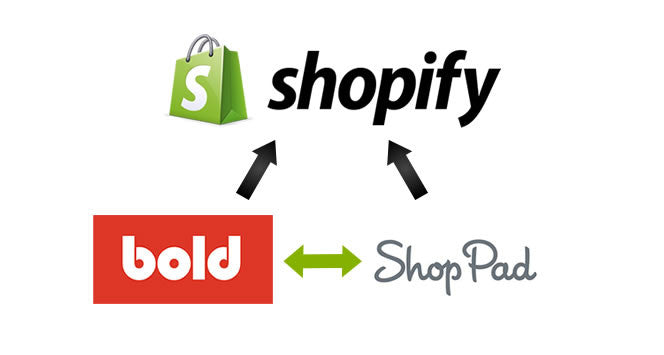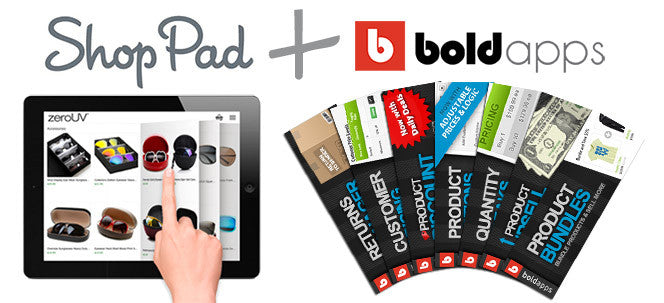Like many startups in the tech industry – or any industry for that matter – we’ve learned a lot as our humble little app development company, Bold Apps, has grown. There’s no greater lesson than when we discovered that our prosperity is very closely tied to our relationships with other companies in our field – namely, other app developers, web designers, and all of the Shopify Partners. As developers in the Shopify ecosystem, we are like kids in a sandbox: we all have to play nice. Around the office here, we affectionately like to call it "Partners Partnering with Partners."
Specifically, this means that for the benefit of our collective customers and clients, our apps simply must work well together. It’s for the greater good – for the success of our own apps, for the success of our customers, and for the success of the Shopify App Store in general. The Shopify App Store is an invaluable resource to all of us, and as developers, it’s our job to ensure that it works as a cohesive unit that helps Shopify stores operate at their highest possible level.
You might also like: Marketing Your Shopify App: Networking and Partnerships
Shopify app compatibility
A challenge that a lot of developers are faced with when they start pushing the limits of a platform is keeping their app compatible with all the other apps available. There's nothing worse than building an awesome app just to find out that it doesn’t work with another app. Not only will it frustrate your customers, but it can result in negative reviews and prevent your app from succeeding in the app store. It also creates unnecessary competition, forcing a customer to choose between apps, and ultimately between app companies, when we’d all be better off if they could just use both apps together to improve their store.
Compatibility issues are not specific to Shopify and can cause issues on other platforms like WordPress, Drupal, or even just website plugins. I know that when working on my own website I've had some frustrating evenings trying to get two plugins working together on a WordPress install. Sometimes the compatibility issues are caused because two apps are trying to work with the same data; sometimes it is because they are using the same classes. There are different solutions to different problems. These are the kind of issues that we’ve been looking at attempting to solve when it comes to our own compatibility with other apps, so that the Shopify store owner and their design company doesn’t have to.
Here at Bold, we've developed some apps that really opened up some functionality that isn’t available natively on Shopify. That’s what the App Store is all about! This, of course, works great for us, however there are some apps which are really cool but manipulate the same data that our apps do, and this can cause some issues.
Here’s an example: For some of our apps, we create hidden products and variants that are not visible on the storefront for the customer. However, when different services access the data to display products on an external site, the hidden products and variants are made visible because our app is only telling them to be hidden on the Shopify store.

The good news is we have built an API that largely resolves these issues. If you’re not familiar with what an API is, it’s short for ‘Application Programming Interface.’ An API can act as an endpoint where a developer can access or interact with data in a secure way. The use of our API allows other developers to properly display the products on stores using Bold Apps.
This means that the hidden products and variants created by our apps won’t be displayed, and the customer will only get the experience intended by the shop owner. The data received by the API is on a per shop basis and tells the developer exactly which products are created by the storeowner on the storefront, and which are not and to be hidden. The API also tells the developer which variants are supposed to be hidden for each product. Each developer is given a special key for their account and an API key which are required in order to initiate the secure connection. This means that the data stays safe for the end user and nobody can access your shop’s data if they're not supposed to. So whether the app is running on your Shopify store, or an external service bringing your shop to WordPress, a phone app, or any external service, the developer can make sure that the hidden products and variants you don’t want displayed will stay hidden.
Working with ShopPad

The first developer to work with us on this project was ShopPad. Their main product (ShopPad) is one of the most popular apps available on Shopify and was the logical first step towards integrating with other apps. One of the most requested additions to both our services was to make Bold Apps work in the ShopPad environment.
The API has allowed us to take a big first step in that direction. Now, for any Shopify stores that want to use both ShopPad and Bold Apps, they can be confident that their customers won’t see any of the hidden products and variants that they weren’t meant to. This is just the beginning for our app development integration. As we add more features and functionality to the API, you will start to see other services begin to work.
Shopify isn’t just building a framework, but rather an ecosystem of Partners who can work together to better the lives of both shop owners and customers through the use of all of our apps. The more we cooperate, the better quality apps our customers can expect. The Bold API is just the first step towards deep integration of apps. Before you know it, most of the apps you want to install on your customers' stores, but so far haven’t been able to because of "bugs" like these, will start working together. When that happens, us and store owners will be able to unleash the true potential of the Shopify platform. It's up to us as developers to cooperate because these apps really do improve Shopify stores, and it can only get better when all of our apps work well together.
Now that we've spent some time working with a great Partner in ShopPad to develop the Bold Apps API (version one), we're enthusiastic to work with more developers to improve on the functionality of the API and to help more apps become compatible with Bold Apps. You can send an email to api@boldapps.net to let us know about your app and how we can work together so that our apps play nice and make the Shopify App Store even better!
Spoiler Alert: We have another big announcement around the topic of app development and "Partners Partnering with Partners" coming in the next couple of weeks. It's good news for all Shopify Partners! Stay tuned and keep your eye on this blog for details...
Read more
- How to Level Up Your App with Theme App Extensions
- 6 Phases of the App Development Process: From Idea to Post-Launch
- Your guide to the Fulfillment Orders API migration
- 4 Must-Read Shopify Docs to Maximize your Success on the Shopify App Store
- How to Build a Shopify App as a Front End Developer
- How to Upload Files with the Shopify GraphQL API and React
- Announcing the Shopify App Challenge Honorable Mentions
- Developing Your First Shopify App: 4 Mistakes to Avoid
- 5 Community-Built API Tools Developers Should Check Out
You might also like: Marketing Your Shopify App: The App Listing Page

